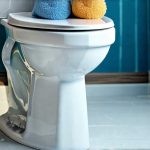The sensation of needing to urinate can range from a mild inconvenience to an urgent disruption of daily life. Many people experience moments where bladder pressure feels particularly pronounced, impacting concentration, comfort, and even social interactions. While there’s a natural variation in how frequently individuals need to void – influenced by fluid intake, diet, age, and underlying health conditions – some find strategic timing can significantly alleviate discomfort and provide temporary relief. This isn’t about ignoring the body’s signals or delaying necessary trips to the restroom; it’s about understanding how simple adjustments to daily routines, specifically around showering, might offer a period of respite when bladder pressure feels overwhelming, or create a more comfortable experience during times when frequent bathroom breaks are impractical.
It’s important to preface this exploration with a crucial disclaimer: This article discusses potential strategies for managing the sensation of bladder urgency and is not intended as medical advice. If you’re experiencing persistent issues like urinary incontinence, painful urination, or significant changes in your voiding habits, it’s essential to consult a healthcare professional to rule out any underlying medical conditions. A doctor can accurately diagnose the cause of your symptoms and recommend appropriate treatment options tailored to your specific needs. This information is for general knowledge and informational purposes only, and does not constitute medical advice.
The Physiological Link: Warmth, Relaxation & Bladder Capacity
The connection between showering and temporary bladder relief isn’t mystical; it’s rooted in how our bodies respond to warmth and relaxation. When warm water flows over the body, several physiological changes occur that can influence bladder function – though these effects are often subtle and vary from person to person. The primary mechanism at play involves a process called vasodilation. Warmth causes blood vessels to widen, increasing blood flow to the skin and extremities. This increased circulation can divert blood flow away from internal organs, including the bladder area, potentially reducing pressure sensation temporarily.
Furthermore, warm water promotes muscle relaxation. A tense pelvic floor – the group of muscles supporting the bladder, bowel, and uterus (in women) – can exacerbate feelings of urgency. When muscles are relaxed, the bladder has slightly more space to expand comfortably before triggering strong urge signals. This doesn’t increase the actual capacity of the bladder; it simply alters the perception of fullness and reduces discomfort associated with a stretching bladder wall. It’s akin to loosening clothing that feels too tight – the physical constraint hasn’t changed, but your experience of it has.
Finally, showering itself can be mentally relaxing for many people. Stress and anxiety often worsen bladder symptoms, leading to increased urgency and frequency. The act of taking a warm shower provides a brief period of mental calm, which can further contribute to reduced perceived pressure on the bladder. However, this is highly individual – if showers are associated with stress or discomfort (e.g., fear of slipping), they may not provide the same benefit.
Optimizing Shower Timing for Relief
To maximize potential relief, consider these points relating to shower timing:
- Pre-Activity Buffer: If you know you’ll be in a situation where bathroom access is limited (long meeting, travel, etc.), showering before this activity might provide a window of comfort. The temporary reduction in perceived urgency could allow you to navigate the situation more easily without constant worry. However, do not rely on this as a substitute for planning appropriate restroom breaks.
- Avoid Extreme Temperatures: While warmth is beneficial, excessively hot water can actually be counterproductive. It may increase blood flow too much, potentially leading to dehydration and concentrating urine, which could ultimately worsen bladder symptoms. Stick to comfortably warm temperatures that feel soothing but not scalding.
- Post-Hydration Pause: If you’ve recently consumed a large amount of fluids, it’s best to allow some time for your body to process the liquids before showering. Showering immediately after drinking a lot may amplify the sensation of fullness as the bladder is already working to eliminate excess fluid. A 30–60 minute pause can make a difference.
The Role of Shower Duration & Water Pressure
The length of your shower and the water pressure you use can also play a role, although these effects are more subtle than temperature or timing. Longer showers – within reasonable limits – provide extended exposure to warmth and relaxation, potentially prolonging any temporary relief. However, excessively long showers can lead to dehydration, so balance is key.
Water pressure influences the intensity of the vasodilation effect. Higher water pressure provides a more robust massage-like sensation, which may further promote blood flow and muscle relaxation. Conversely, very low water pressure might not provide enough stimulus to achieve noticeable benefits. Finding the sweet spot – a comfortable level of pressure that feels invigorating without being overwhelming – is important.
It’s also worth noting that different showerheads can affect the experience. A rain-style showerhead distributes water more evenly, creating a gentler and potentially more relaxing sensation compared to a concentrated jet stream. Experimenting with different showerhead types might help you find what works best for your body.
Beyond Showering: Complementary Strategies
While strategically timed showers can offer temporary relief, they are most effective when combined with other healthy bladder habits. Consider incorporating these complementary strategies into your daily routine:
- Fluid Management: Drink adequate amounts of water throughout the day, but avoid large volumes at once. Spread out your fluid intake evenly to prevent overwhelming the bladder.
- Dietary Adjustments: Limit caffeine and alcohol consumption, as both are diuretics that can increase urine production. Also, identify any foods or beverages that trigger your bladder symptoms and reduce their intake accordingly.
- Pelvic Floor Exercises (Kegels): Strengthening the pelvic floor muscles can improve bladder control and reduce urgency over time. These exercises involve contracting and relaxing the muscles you use to stop urination midstream. Consult a physical therapist specializing in pelvic health for proper guidance.
- Bladder Training: This involves gradually increasing the intervals between bathroom visits, helping to retrain your bladder to hold more urine comfortably. Again, this should be done under the guidance of a healthcare professional.
- Stress Management: Practice relaxation techniques such as deep breathing exercises, meditation, or yoga to reduce stress and anxiety, which can exacerbate bladder symptoms.
It’s crucial to remember that these strategies are tools for managing symptoms, not cures. If you’re experiencing significant bladder problems, seeking professional medical evaluation is the most important step towards finding long-term solutions. A healthcare provider can accurately diagnose your condition and recommend a personalized treatment plan tailored to your needs.





















